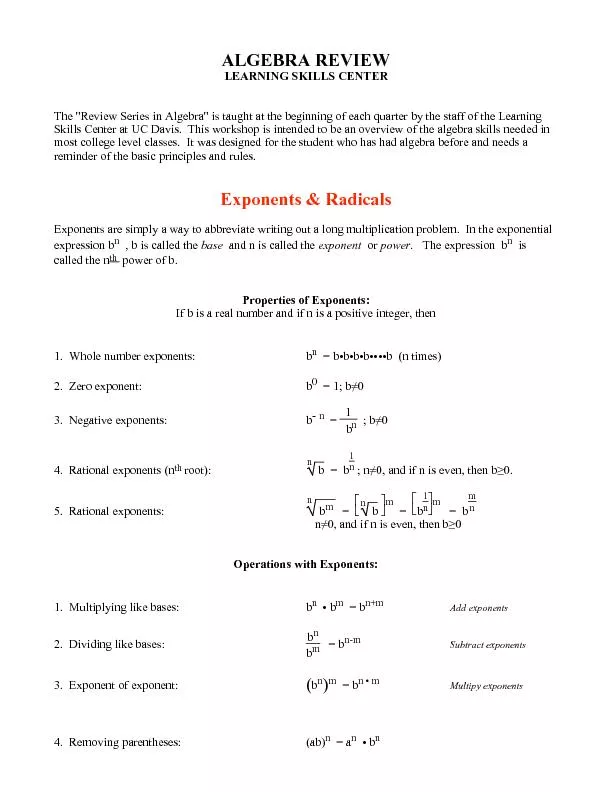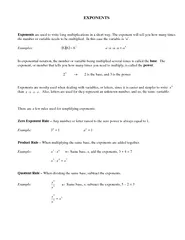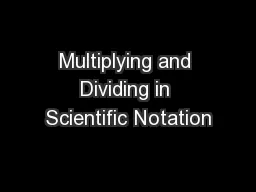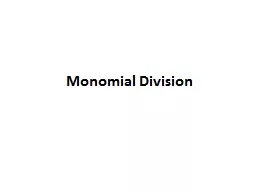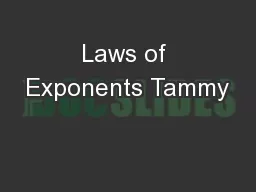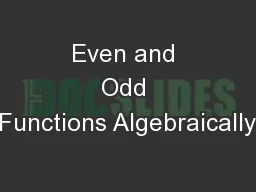PDF-Exponents are simply a way to abbreviate writing out a long mul ...
Author : celsa-spraggs | Published Date : 2016-06-03
Ope Exponents and Radicals Practice Exercises Simplify the following as much as poss Thus the definition of a logarithm is logb A n if and only if bn A The base
Presentation Embed Code
Download Presentation
Download Presentation The PPT/PDF document "Exponents are simply a way to abbreviate..." is the property of its rightful owner. Permission is granted to download and print the materials on this website for personal, non-commercial use only, and to display it on your personal computer provided you do not modify the materials and that you retain all copyright notices contained in the materials. By downloading content from our website, you accept the terms of this agreement.
Exponents are simply a way to abbreviate writing out a long mul ...: Transcript
Download Rules Of Document
"Exponents are simply a way to abbreviate writing out a long mul
..."The content belongs to its owner. You may download and print it for personal use, without modification, and keep all copyright notices. By downloading, you agree to these terms.
Related Documents

